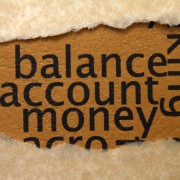DIVIDEND STOCKS AS A RETIREMENT STRATEGY
The financial media is full of retirement advice. Avenues to generate income to fund retirement, working longer to make up for poor savings habits, and ‘hot stocks’ for a retirement portfolio are among many topics written about.
The problem with this content is that it’s ‘one size fits all’ retirement advice, and due to the complexity of individual retirement planning, it falls short of providing quality advice.
Retirement planning has to be specialized and personalized to the individual retiree. An approach that makes sense for a retiree with $5 million in the bank and a vast real-estate portfolio, may have no basis in reality for a retiree with $750,000 in savings and children and grandchildren to support. When reading these articles I am often left with the feeling that the authors have never sat down across from a living, breathing retiree.
Today’s retirement strategy ‘flavor of the day’ is investing in dividend stocks. Now I am not at all opposed to incorporating dividend paying stocks into retirement portfolios, it’s just that there is potential for a large loss of principal associated with stock investing, and not all retirees (especially those that need to dip into a bit of principal to finish the month) can take that risk. Two market crashes in a decade are proof.
How do Dividends Help?
There has been a lot of research done on the impact of dividend investing versus non-dividend investing. According to a report from Lebel Harriman:
“Dividend income has represented roughly one-third of the monthly total return on the Standard and Poor’s 500 since 1926. According to S&P, the portion of total return attributable to dividends has ranged from a high of 53% during the 1940s–in other words, more than half that decade’s return resulted from dividends–to a low of 14% during the 1990s, when investors tended to focus on growth. If dividends are reinvested, their impact over time becomes even more dramatic. S&P calculates that $1 invested in the Standard and Poor’s 500 in December 1929 would have grown to $57 over the following 75 years. However, when coupled with reinvested dividends, that same $1 investment would have resulted in $1,353. (Bear in mind that past performance is no guarantee of future results, and taxes were not factored into the calculations.)”
Whether or not that’s true, there is a perception with dividend-paying stocks that they tend to be less volatile than stocks that don’t pay dividends, because they act as an extra cushion in falling markets.
Re-Allocate
Retirement is no time to try and aggressively grow your portfolio. I believe that some retirees need to really reduce their exposure to stocks. Again there is a big difference between having $5 million and $750k in retirement resources. For the $750k account, where protecting principal and generating enough supplemental income to live off of are major goals, an aggressive stock-based portfolio in a bad market may put such a dent into the principal that you can never recover and you will run out of money. As individuals approach retirement (within 5 years), they should take a step back and get their portfolios more conservative.
Investors need to realize that markets can fall dramatically and if they are near retirement, a big market hit can put a major dent into retirement plans. Just ask those baby boomers hitting retirement in the next year or two, and have watched their retirement funds wither away in the last market crash. I can’t tell you how many people have come to me trying to figure out how to achieve their financial goals for retirement, after they watched their investments lose 40% of their value a few years ago because they were far too heavily invested in stocks.
Enhanced Income
I am not against retirees investing in stocks; it’s just that I think that current financial planning models are far too aggressive in their recommended stock allocations. I know many financial planners who have no problem advising clients to have up to 80% of their retirement portfolios in stocks, regardless of their financial situation.
How should retirees gain exposure to stocks? Aside from having international exposure, dividend paying stocks can play a major role and may be a good idea. The beauty of investing in dividend paying stocks is that you get the best of both worlds. Not only do you get the potential capital appreciation that stock investing gives you, but you also receive a steady income stream that is at least as competitive with — if not more than — investing in bonds. With more than a few large, blue-chip companies paying dividends that are in excess of 4% annually (compared with about 2% for a highly rated bond), many retirees can enhance their income streams with these stocks.
There is certainly value in dividend paying stock investing if done in a context that helps you meet your retirement goals. Speak with your financial advisor to learn how to incorporate dividend paying stocks in your portfolio.
The information contained in this article reflects the opinion of the author and not necessarily the opinion of Portfolio Resources Group, Inc., or its affiliates.
Aaron Katsman is author of the book Retirement GPS: How to Navigate Your Way to A Secure Financial Future with Global Investing (McGraw-Hill), and is a licensed financial professional both in the United States and Israel, and helps people who open investment accounts in the United States. Securities are offered through Portfolio Resources Group, Inc. (www.prginc.net). Member FINRA, SIPC, MSRB, SIFMA. For more information, visit www.aaronkatsman.com or email aaron@lighthousecapital.co.il






